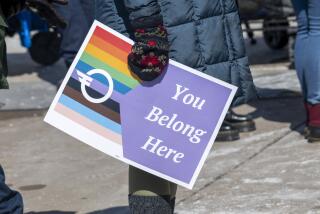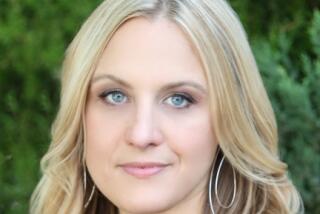More Americans Believe in God, but Fewer Belong to Churches : Surveys Find a Gain in Faith, a Drop in Giving
- Share via
Americans have become more religious in their beliefs but attend church less often and give a smaller portion of their incomes to church causes, according to recent surveys.
In the last decade, the nation’s churches have made no headway in narrowing the gap between what pollster George Gallup Jr. calls “believers” and “belongers.”
A survey released by the Gallup Poll indicates that an estimated 78 million U.S. adults are “unchurched” compared to 61 million reported in 1978. But American adults who believe Jesus was either God or the Son of God rose to 84%--up from 78% in 1978. In addition, the survey found widespread support (76%) for the view that a person can be a good Christian or Jew without attending a church or synagogue.
Those who left their church for specific reasons were most likely to cite the church’s excessive concern with money and narrow religious beliefs, Gallup found.
“In the past 10 years, the number of Americans who say churches are too concerned with organizational matters and not enough with spiritual concerns and social justice has increased,” Gallup and Jim Castelli said in a report released Friday on Gallup’s study, called Unchurched Americans 1988. “And a growing number feels that the morality being taught by churches is too restrictive.”
‘Unchurched’ Defined
The poll defined “unchurched” adults as those who either are not members of a religious institution or members who have not attended services for six months, exclusive of religious holidays or other special occasions.
The $163,000 survey was conducted for Congress ‘88, a national evangelism conference involving 22 Protestant and Roman Catholic organizations held near Chicago this month.
Meanwhile, figures released on Friday by the U.S. National Council of Churches, covering 220 religious bodies, showed that church membership in the United States remained essentially unchanged for the second year in a row. The total membership of 142,799,662 for 1986--the most recent figures provided in the 1988 Yearbook of American and Canadian Churches--indicated that the proportion of Americans who are religiously affiliated continued to hover near 60%.
“Mainline losses continue but are moderating,” said Constant H. Jacquet, the information spokesman for the National Council of Churches’ Office of Research and Evaluation. “At the same time, the trend toward gains in some conservative churches is also moderating. On balance, the statistical picture has flattened out.”
The 367-page yearbook shows that per capita giving by U.S. church members rose to $344.42 in 1986, compared to $321.77 the year before. When the increase is adjusted for inflation, it amounts to an increase of $5.01 per member.
Jacquet said this means people are giving more to their churches and the per capita increase is “well above the inflation rate,” but researchers who just completed a separate study concluded that American churches are not reaping the benefits of their members’ increased incomes.
“People are giving a smaller proportion of their income now than they did in the past,” said Sylvia Ronsvalle of empty tomb inc. during a telephone interview. The nonprofit research and service group, based in Champaign, Ill., analyzed 31 Protestant denominations over a 17-year period from 1968 to 1985. The study was funded by a Lilly Endowment grant.
In 1968, members of the surveyed denominations gave an average of 3.05% of their incomes to the church, after adjustments for inflation and taxes. But in 1985 the figure was 2.79%.
“In other words,” Ronsvalle said, “while disposable income of these members went up $2,511 on the average (after taxes and inflation) during that period, and they gave an absolute figure of $49 more to their churches, it actually represented 8% less of their disposable income.”
Ronsvalle said the empty tomb inc. survey corroborated the new Gallup findings that believers are leaving churches because they feel there is too much emphasis on money and not enough on social concerns.
Slippage on Social Concerns
“People are saying the church is always asking for money, but apparently it is not translated into social concerns to a degree that they’re satisfied with,” she said. “People like to see the church alleviate need, not just maintain current operations.”
The 1988 Church Yearbook reveals that although fewer people are giving, the overall dollar amount contributed to religious organizations has increased. But the empty tomb study shows that most of the churches have had to use these additional donations for current operations rather than reaching out beyond local programs.
Gallup, in releasing Unchurched Americans 1988, said many respondents expressed concern that the churches are not living up to their responsibility. Only 35% of the unchurched, compared to 58% of the churched, agree that “most churches and synagogues today have a clear sense of the real spiritual nature of religion,” according to the poll.
Paul Benjamin, director of Congress ‘88, the evangelism conference, agreed. “There’s a tendency in the church to go along with business as usual,” he said. “What these people want is a congregation that has warmth and . . . a biblical emphasis.
“I think churches are going to have to tone down their blatant fund-raising and realize that people are more important than things.”
More to Read
Sign up for Essential California
The most important California stories and recommendations in your inbox every morning.
You may occasionally receive promotional content from the Los Angeles Times.













